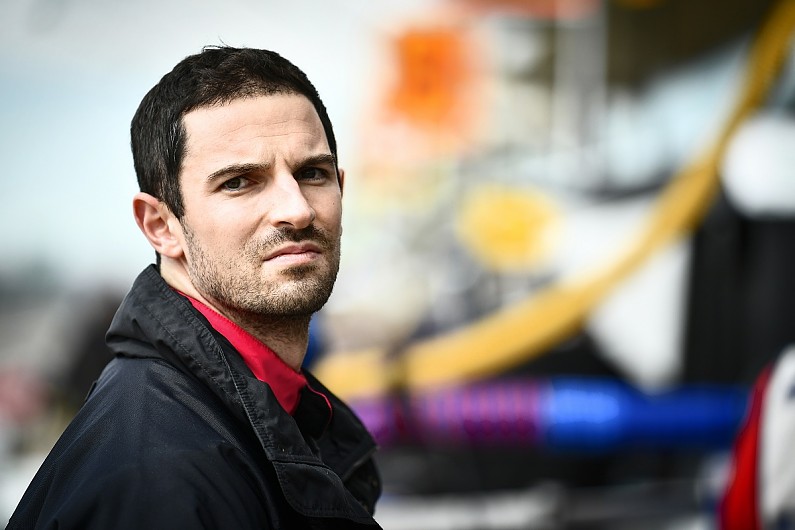With IndyCar roaring back into action at Texas Motor Speedway this weekend, David Malsher-Lopez looks ahead to what is currently set to be a 14-race season, analyses Alexander Rossi’s chances of winning his first IndyCar title and checks out his competition
So there will be no Dallas Fort Worth faithful in the Texas Motor Speedway grandstands, no bevy of sponsor guests in the beautiful hospitality suites, nor an orchard of Apple Macs in the media centre. But on Saturday, the IndyCar Series is back in action. It’s a compressed timeframe – practice, qualifying and the race spread across an approximately 10-hour span – but in imperfect circumstances, it’s a workable and, likely, a highly enjoyable solution.
The same must be said of the schedule which remains fluid. It’s by no means ideal to be starting the season on arguably the most daunting oval of all, after almost three-quarters of a year off, nor is it ideal that it the opening round gets going a month before action resumes at the second round at Indianapolis Motor Speedway’s road course. We can collectively shed a tear for the cancelled events, Long Beach, Barber Motorsports Park, Circuit of The Americas, Belle Isle, Toronto and the returning Richmond, and we wait and wonder which races will feature spectators.
But Penske Entertainment hasn’t taken any obvious missteps since buying IndyCar and Indianapolis Motor Speedway last fall, and while the coronavirus pandemic has butchered the calendar, and caused all owners to worry over their sponsors’ agreements for 2021 and ’22, there seems to be widely-held belief that in times such as these, the future of this branch of the sport couldn’t be in better hands.
There was plenty of edge to the ‘Who’ll be fastest?’ battles in pre-season testing at COTA back in mid-February, and the six-race sim racing championship raised some heartbeats and fostered some irritation, but in terms of real IndyCar competition, the teams and drivers have not had a true adrenaline buzz for eight-and-a-half months.
So who has the best shot at the 2020 IndyCar Series championship? Well, that’s as impossible to tell as ever in IndyCar, although it’s worth remembering that only Chip Ganassi Racing’s Scott Dixon and Penske drivers have won the last seven titles. If there is to be a new champ, that is most likely to be Alexander Rossi, and he remains quietly confident.
Very quietly confident, in fact. He doesn’t want to talk about Andretti Autosport’s final preseason test day, not because something went drastically wrong, but because everything went so well and he doesn’t want to provide us with any specific technical details.
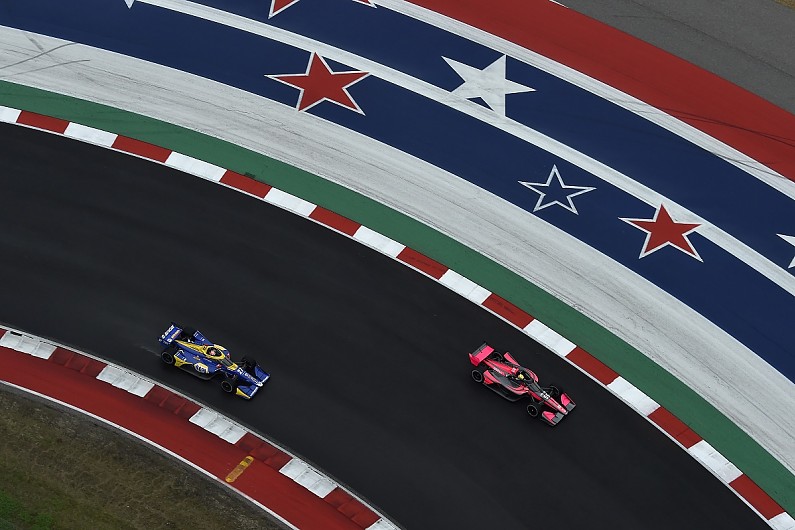
“A lot of information was gathered, it was really good, and I feel like the team is working at the highest level it’s been at since I joined four years ago,” says the California-born racer who finished second in the championship in 2018 and third last year. “I feel like this has been our best off-season and we’re all feeling very encouraged.
“I don’t think we’ve focused on one area, even though we identified road courses as a weakness for us in the second half of 2019. We’ve taken the approach as if we struggled at every type of track last year, and need to improve our approach across the board. We had two really strong tests [COTA and an early-March test at Sebring] in terms of the data collected and verification that the off-season development went in the right direction.
“We’ve also taken a big step forward in terms of off-track preparation like pitstop practice. The mindset of everyone from drivers to engineers to crew members is really good and positive – but with emotions held in check.”
Certainly Rossi sounds confident enough to downplay the effects of the new-for-2020 IndyCar aeroscreen. The Red Bull Advanced Technologies-developed device has presented a hurdle for all IndyCar team engineers as they tackle the thorny problem of ameliorating the effect of an extra 65lbs that has shifted the car’s centre of gravity forward 0.6% and up by 15mm. Adjusting the car’s handling is less of an issue than ensuring the front tyres aren’t overworked.
“We don’t have all the details yet because obviously we’ve only done a day and a half of testing and they’ve been on relatively high-grip tracks,” Rossi explains. “We lost a whole day plus a morning due to bad weather at COTA, and Sebring was rubbered up and it behaves more like a road course than a street course on days like that.
“But that said, I think we’ve got a general idea of what the aeroscreen does and the effect isn’t hugely dramatic. It changes setup philosophies a little bit, but no-one’s having to reinvent the wheel: it’s all pretty manageable. Firestone is coming with different solutions to deal with the change, and we’re content with the fall-off.”
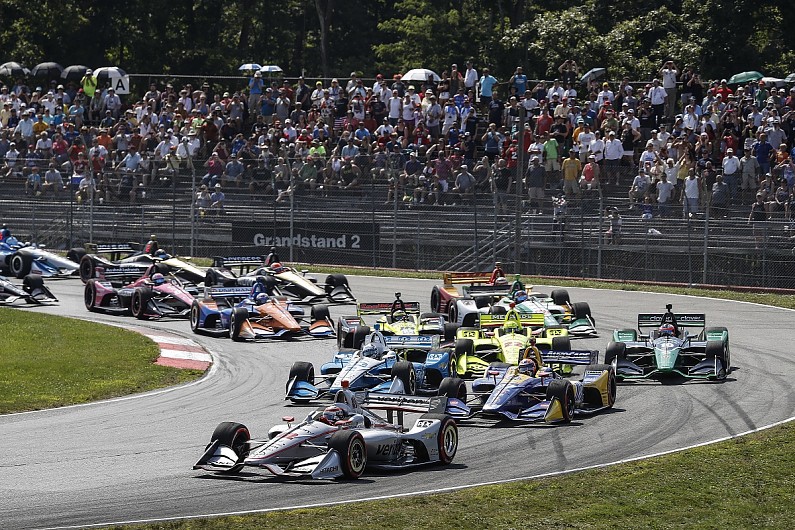
Rossi shows similar equanimity when discussing engine performance.
“I guess after the past couple of years anyone on either side of the fence is concerned about potential for Indy,” he says. “Has Honda caught up at the top end? Has the opposition [Chevrolet] made the same amount of progress and retained an edge? We don’t know. But all the other tracks in the series are very different formats from Indy, and we simply don’t know about any of them at this stage.”
The million-dollar question then is whether Rossi is finally going to be able to topple Team Penske and Chip Ganassi Racing to earn Andretti Autosport its first IndyCar championship since Ryan Hunter-Reay conquered in 2012.
“Look, I go into the season with the same mindset every single year – to win,” he says. “During our [contract renewal] negotiations in the middle of last year I told the team there were a lot of things I wanted, areas where I thought we all as a group needed to be better. They were receptive to what I was saying, and a lot of those changes have been implemented.
“And now I can see the progress – big things, little things, people things – and I think everyone is happy with what’s been done and I can’t see any areas where we’re lacking. So to answer your question, I believe we’re better placed than ever before to challenge for the title.”
Who will be Rossi’s rivals
Of course, taking on Penske and Ganassi is one part of Rossi’s 2020 mission, but he also has to overcome the challenge from within the Andretti Autosport-Honda camp. Hunter-Reay seemed to lose his mojo last year, but providing his confidence has returned, the 2012 champ and 2014 Indy 500 winner is well capable of beating anyone on his day.
The same could be said of a man at the other end of his IndyCar career, 20-year-old Colton Herta, who scored two wins and three poles in his rookie season last year.

By switching from the start-up Harding Steinbrenner Racing team, which had a technical partnership with Andretti Autosport, to become a fully integrated member of Michael Andretti’s squad, Herta no longer has even a tissue wall between himself and the others. If that really does make a difference, it should help all involved and may uncover some secrets. Rossi, for example, says although he loves working with Jeremy Milless as his race engineer, it’s useful to have Herta’s race engineer Nathan O’Rourke on hand too.
PLUS: The shared past of IndyCar’s champion and its next big star
Both Marco Andretti and Zach Veach have been doing revision – to the extent that during the off-season Marco even went back to Rob Wilson’s High Performance Driving course to improve his technique – but they can’t yet expect to join the title-challenging group. Just a podium or two would be regarded as a first step back to respectability. Still, Jack Harvey, driving for the Meyer Shank Racing team which now has a technical partnership with Andretti Autosport, is at least as likely to score top-three finishes.
Chip Ganassi Racing has re-expanded to become a three-car team, Marcus Ericsson joining fellow Swede and IndyCar sophomore Felix Rosenqvist, along with five-time IndyCar champion Dixon. With the shutdown of the IMSA/Le Mans arm of the team following Ford’s decision to end its successful GT program, there has been a significant reshuffle at Chip’s fabulously successful squad.
Chris Simmons, who steered Dario Franchitti to three consecutive titles (2009-’11) and two Indy 500s (2010 and ’12) and then won two more championships with Dixon (2015 and ’18), has become Ganassi’s competition manager, replaced as race engineer on Dixon’s #9 car by Michael Cannon.
The latter has arrived from Dale Coyne Racing, perhaps crucially armed with knowledge of how to set up the current breed of IndyCar on ovals – the area in which Ganassi has proved most inconsistent since the current car arrived in 2018. With CGR’s managing director Mike Hull continuing to call strategy, it’s near-impossible to imagine Dixon failing to be a title contender.
The team’s technical director Julian Robertson will again serve as race engineer for Rosenqvist, who won last year’s IndyCar Rookie of the Year title and finished sixth overall in the points table. The 28-year-old took well to IndyCar and, after a wobbly middle-third to the season, regained his composure and should be a regular victory contender this year. Team manager Barry Wanser and Chip Ganassi himself will run the #10 from trackside.

Ericsson will be engineered by Brad Goldberg who ran the Richard Westbrook/Ryan Briscoe #67 Ford GT, and who also teased the very best out of Charlie Kimball while the Californian was at Ganassi. Goldberg should be ideal for taming Ericsson’s over-enthusiasm in qualifying and bolstering the ex-F1 driver’s self-confidence when being directly compared with a legend and one of the most versatile 20-somethings in racing today.
Team Penske-Chevrolet has won four of the last six IndyCar Series titles, and all three drivers responsible for that success remain onboard. Two-time and reigning champion Josef Newgarden is clearly only getting stronger, blending great speed with racing savvy. He’s an instinctive fighter, but 95% of the time remembers when to rein that in and not push his luck if he’s to reach the season finale still in the title fight.
Will Power has been the fastest IndyCar driver over a single lap for the past dozen years and also one of the masters of fuel and tyre-saving on race day. His only significant flaw remains the occasional temper spike when outrageous fate or a team screw-up damage his potential; which sometimes results in a driving error that further hurts his race result and therefore impedes his path to a second championship.
Perhaps team owner Roger Penske stepping back from calling the #12 car’s strategy (to focus on minor things such as running the series and IMS) and being replaced by the soothing tones of Ron Ruzewski will help in that regard.
The other Penske driver is defending Indy 500 winner Simon Pagenaud, who usually doesn’t have the same scintillating pace as Power but is better able to prevent irritations from reflecting in his driving, and therefore is more consistent at amassing points.
Moreover, last year he bounced back from a poor 2018 to look like a potential champion once more. He heads into the new season in strong spirits, and it’s safe to say that Penske’s trio will be formidable once more.
Another unchanged driver line-up is found at Rahal Letterman Lanigan Racing-Honda with Graham Rahal and Takuma Sato remaining onboard for their third year together. Hopefully that consistency can help rectify the inconsistency seen in the RLLR cars’ performances in recent years. On their best days, they’re up near the front, but there are race weekends when they’re quite anonymous. The vast potential in the team’s technical department must surely be fulfilled eventually.
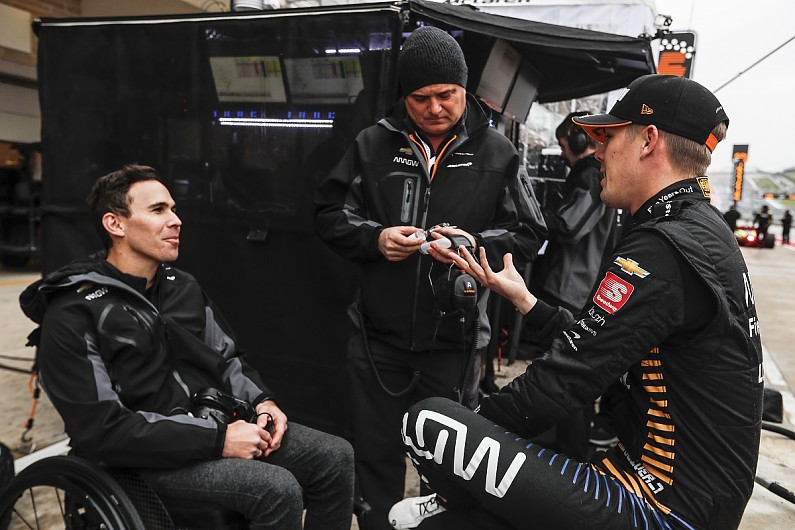
The significant changes for 2020
There are newcomers and relative newcomers that we expect to mess with the big three teams quite regularly in this 14-race season. While Rosenqvist and Herta were always expected to shine as rookies in 2019 – brilliant talents with great cars – this year’s fresh crop of full-time newbies have the opportunity to elevate previous B-class teams to A-class status.
Arrow Schmidt Peterson Motorsports has morphed into Arrow McLaren SP, switching from Honda to Chevrolet, has undergone dramatic personnel changes with Craig Hampson hired as R&D engineer, with James Hinchcliffe and Ericsson ditched for 2019 Indy Lights champion Oliver Askew and 2018 Indy Lights champion Patricio O’Ward.
Expect O’Ward to take the gung-ho, knife-in-the-teeth approach and be the better qualifier, Askew to be the more analytical driver who keeps the tyres under him for a whole stint and better avoids error.
Ed Carpenter Racing has flushed out the sporadically fast Spencer Pigot and Ed Jones and replaced them with Askew’s biggest rival in Lights, Rinus VeeKay, who showed strong pace in pre-season testing, and Conor Daly, who finally gets a chance to run a whole season – albeit for different teams. He gets an extra ECR entry for the Indy 500, but the other ovals see him cede his seat to team owner Ed Carpenter and instead reprise his role as Max Chilton’s sub at Carlin. Trevor Carlin’s mighty little team will run only one car at Texas but expects to run two thereafter.
The other bright new star to watch is at Dale Coyne Racing, where funding from Team Goh has allowed 2019 Super Formula Rookie of the Year Alex Palou to cross the pacific ocean and jump in the #55 entry which will be run by Eric Cowden, a man who has won races with Penske, Ganassi and Andretti.
Palou is effectively replacement for Sebastien Bourdais, although Santino Ferrucci has now switched to the Vasser-Sullivan backed arm of the DCR squad. Coyne was disappointed to lose Hampson to Arrow McLaren SP and Cannon to Ganassi, but an Olivier Boisson/Cowden combination is a strong one.
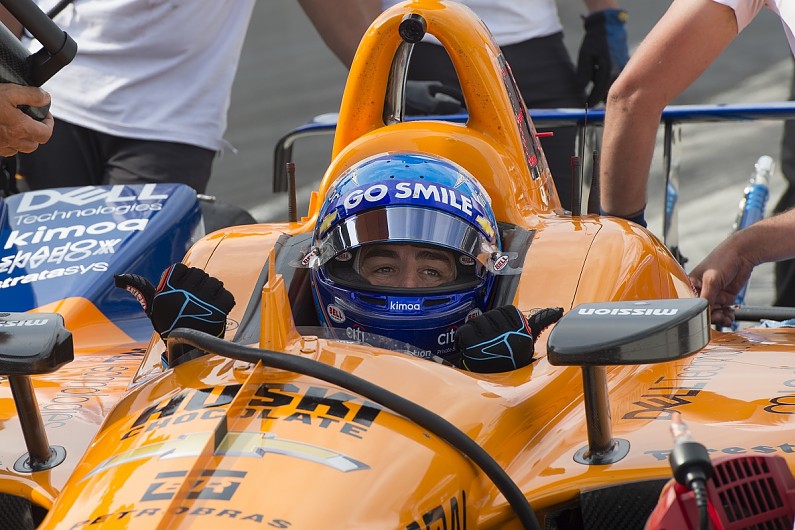
One-offs, two-offs, three-offs and pissed offs
Bourdais will run at least one race, Portland, in the #14 car of AJ Foyt Racing but lost three of his other planned events to the coronavirus cull. For the other road/street course races, the car will be driven by journeyman Indy Lights driver Dalton Kellett, while Tony Kanaan will step in for the ovals. The second Foyt car will be driven full-time by Kimball.
Fernando Alonso will race the Indy 500 in a third Arrow McLaren SP entry, but unless he’s granted a full day of testing – which looks unlikely – he won’t be doing Grand Prix of Indianapolis as originally planned.
The former star of that team, Hinchcliffe, will pilot a sixth Andretti Autosport car – seventh if you count Meyer Shank Racing’s new liaison with Andretti – at Texas this weekend, then GP Indy next month and the Indy 500 in August.
Pigot will pilot the Citrone/Buhl Autosport entry run by RLLR at Grand Prix of Indy and the 500, while DragonSpeed has had its planned expansion to a six-race campaign struck hard by the coronavirus and so far has only committed to the Indy 500.
Sage Karam returns to Dreyer & Reinbold Racing for the 500, Juncos Racing should appear there too (with or without Kyle Kaiser), and as far as drivers are concerned, expect to see JR Hildebrand, Oriol Servia and maybe ousted Foyt driver Matheus Leist make an appearance at IMS.
Perhaps the saddest loss of opportunity caused by the pandemic is that of Supercars star Scott McLaughlin, who was due to start GP Indy in a fourth Penske, and for whom other races were being considered.
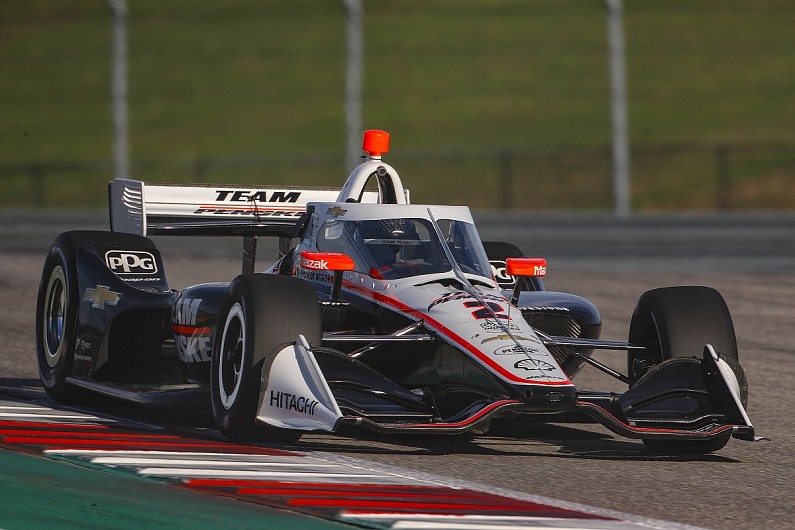
As Team Penske president Tim Cindric explained on Wednesday: “Currently with the schedule that he has and the quarantine rules that exist within travel at the moment going to and from Australia, if those stay in place the way that they are relative to the schedule, I just don’t see that it’s feasible.”
The lad is clearly being groomed for a full-time switch to American racing and he shone in pre-season testing, finishing the test third fastest. We hope to see him back as soon as possible.
Noteworthy changes in pits and paddocks
The introduction of the aeroscreen, which looks sadly bucket-shaped when viewed from head-on but is graceful from other angles, seems almost passé now, despite tomorrow’s Genesys 300 being its competition debut,
However, it’s worth noting that there will now be seven crew members allowed over the pit wall for each car’s pitstops – four tire changers, one air-jack operator, one fueller, and one aeroscreen attendant. That attendant may only work on the aeroscreen and its tear-offs, must remain in control of all tear-off materials, must remain behind the pit wall until the car comes to an absolute stop, and may only work while the car’s rear tyres are in the air.
There are slightly lowered pits lane limits (two-stage at Texas again), and an increase in turbo boost to 1.5-bar for Indy 500 qualifying, but IndyCar’s other notable change for 2020 is the reintroduction of engine-related grid penalties.
The reduction of the season from 17 races to 14 and the deletion of testing means IndyCar has reduced each entry’s engine lease total from four per year to three, which is reasonable.

After all, anticipated mileage for the season has dropped from 10,000 miles to somewhere between 7,500 and 7,800, and both Chevrolet and Honda for a long time have built their engines with a ‘safety margin’ to exceed 2,500 miles per unit.
But now any car that has to switch to a fourth unit (the Indy 500 not included) will suffer a grid penalty in the next race – a six-place drop for road/street courses and a nine-place drop on ovals.
It’s disappointing to consider that a driver who is on his third engine and leading the penultimate race when his engine detonates will not only lose a substantial number of points there, he will also be unable to start higher than seventh on the grid at the finale. One can only hope it won’t have a direct effect on the championship outcome.
But all that is still to come, or, in the engine grid penalties case, hopefully isn’t. For now though, let’s celebrate America’s premier open-wheel series will be back in action.

